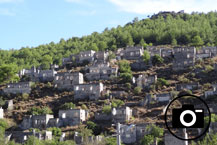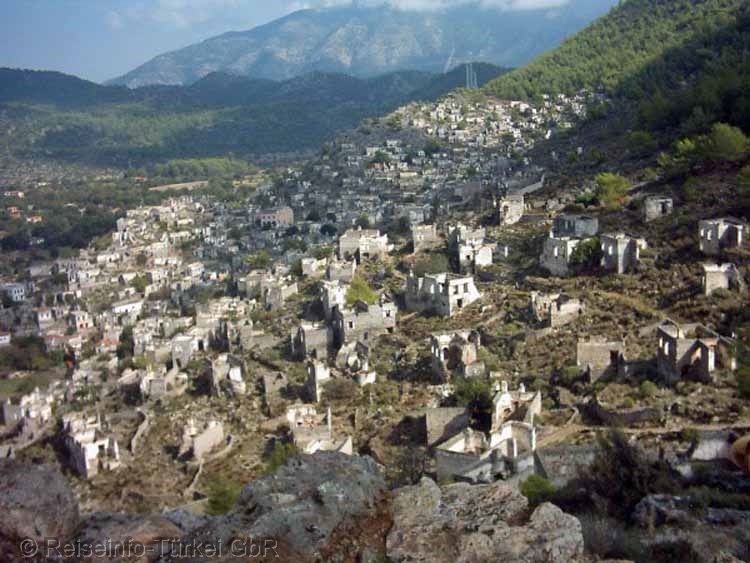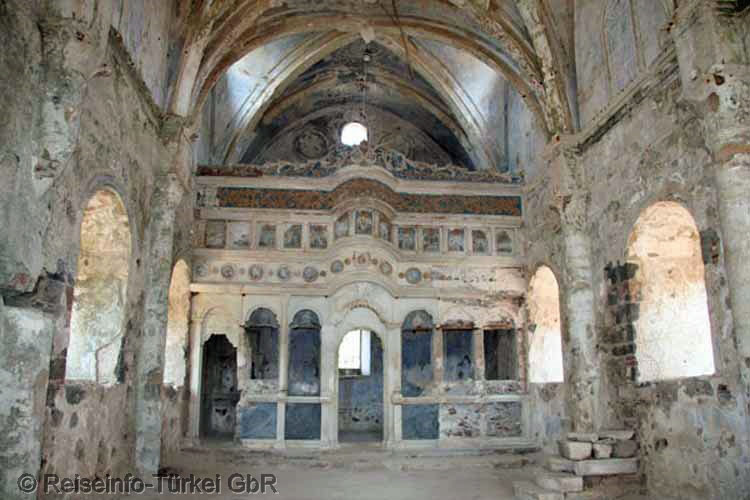|
Interesting places in Turkey |
|||
| Ghost village near Fethiye |
|
|||||
| Kayaköy | ||||||
| The ancient Karmlassos | ||||||
|
Our video on the topic of this page |
||||||
|
|
||||||
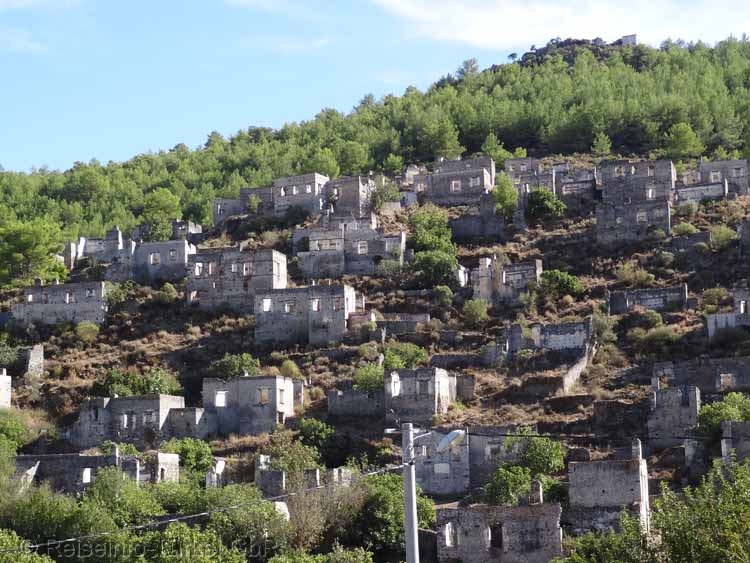 |
|
|||||
|
Kayaköy (Turkish: rock village) is situated in the area of a small town which was until 1922/23 mainly inhabited by ethnic Greeks. The largest part of the village, which is situated about eight kilometres south of Fethiye in a rocky mountain valley, is now a ghost town. |
||||||
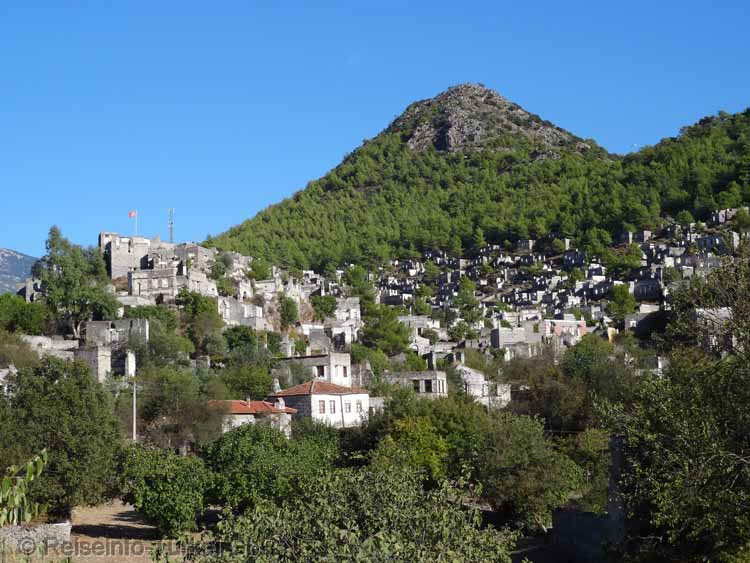 |
||||||
|
The history of the village of Kayaköy is said to date back to 3000 BC. First traces of settlement can be dated to this time. In the immediate vicinity of the village sarcophagi and rock tombs from the 4th century BC have been found. |
||||||
|
|
||||||
|
In ancient times the
city of Karmylessos or Karmlassos was founded here, which was still
considered a good port around 1100. This was probably the Gemiler
Bay below. |
||||||
|
|
||||||
|
The former Greek inhabitants of Kayaköy (Greek: Levissi) were expelled in 1923 in fulfilment of the Treaty of Lausanne. Since then, the abandoned houses have been left to gradual decay. Over time, the roofs were damaged by the effects of nature and collapsed. Only the churches have survived somewhat better. Some frescoes are almost intact. |
||||||
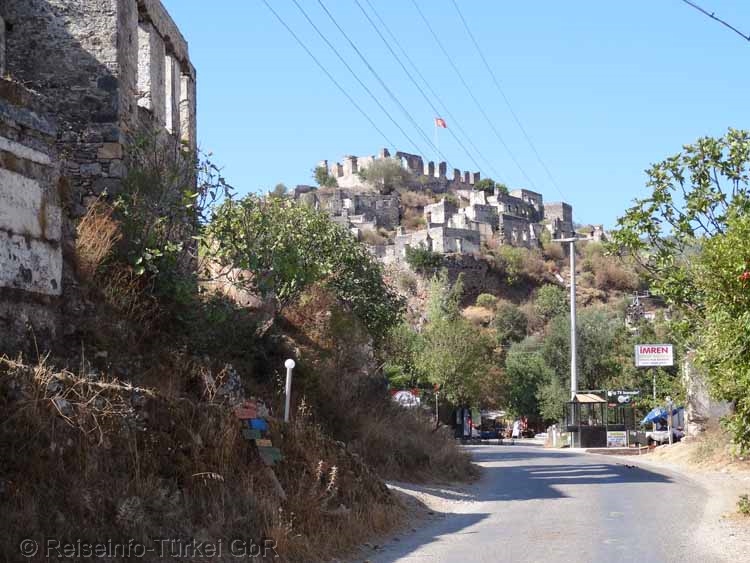 |
||||||
|
Tourists from all over the world brought new life to the ruins. The inevitable sales and kebap stands can now also be found here. |
||||||
|
|
||||||
|
Today the most important economic factor of the village is tourism, and organic farming is also practised. As everywhere in Turkey, the residents search and find their market niche. As grotesque as a camel ride through the plain may seem to some holidaymakers, disabled people are grateful for the offer to explore the ruins on a Eşek (donkey). |
||||||
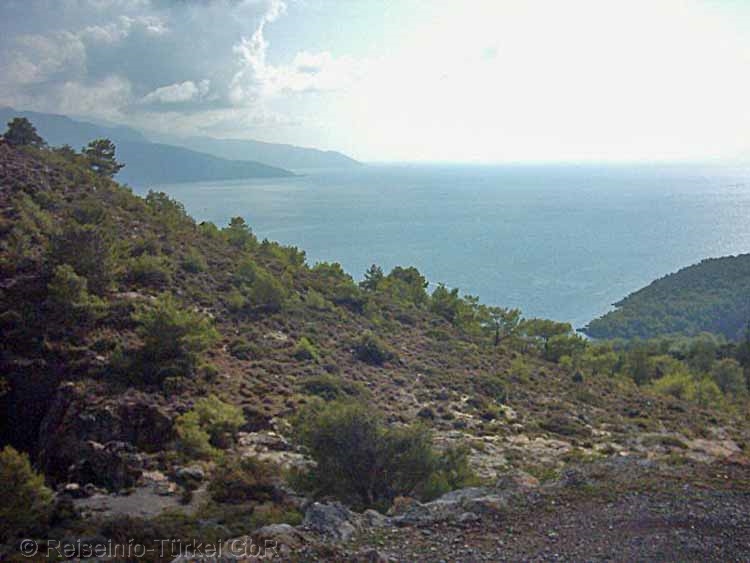 |
||||||
|
Climbing up the mountain above the village, one has a view of the sea and the "Cold Water Bay". In south-east direction, at a distance of 3 km as the crow flies, there is the world-famous lagoon of Ölüdeniz with its dream beach. |
||||||
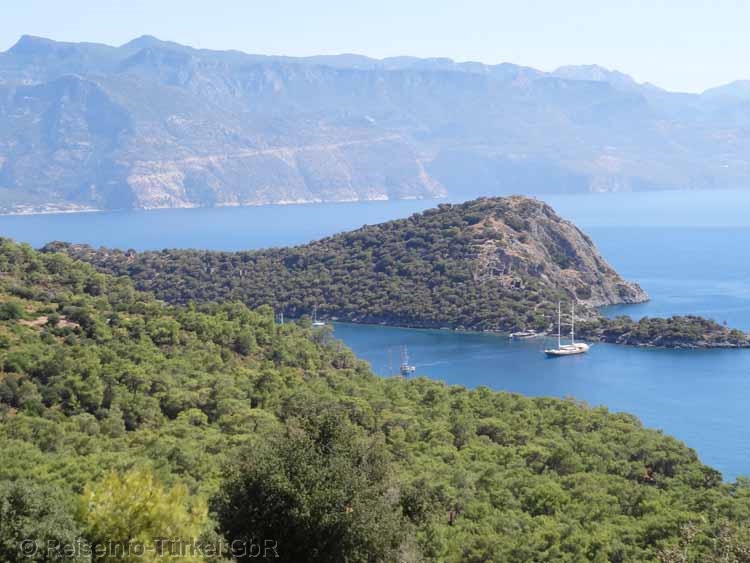 |
||||||
|
On the way to Gemiler Bay, which is believed to be the port of ancient Karmlassos, there is a magnificent view of the bay and the island of Gemiler, where there are extensive Byzantine church buildings. Three church buildings from the 5th and 6th century A.D., a large basilica from the 7th century A.D. and an approx. 160 m long, partly covered cloister (corridor) between two churches are worth mentioning. |
||||||
